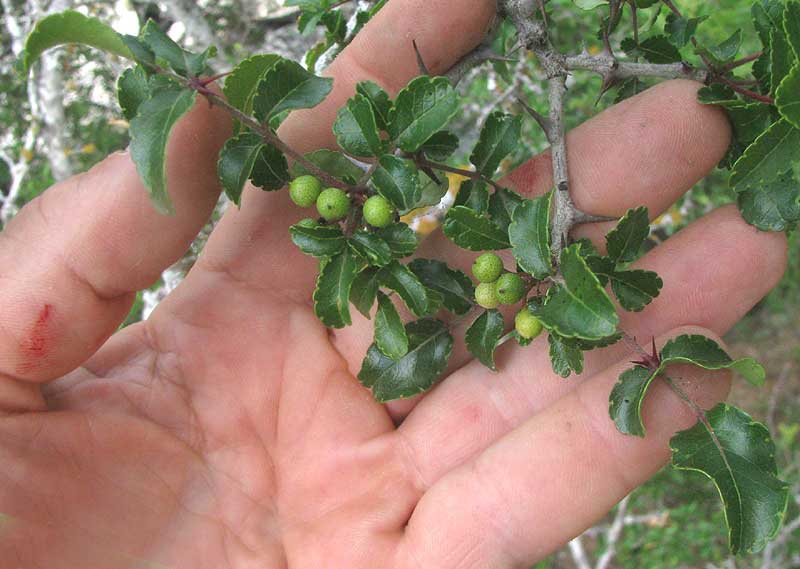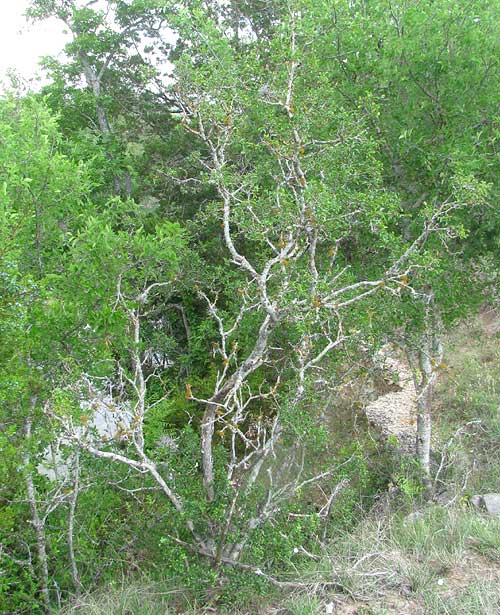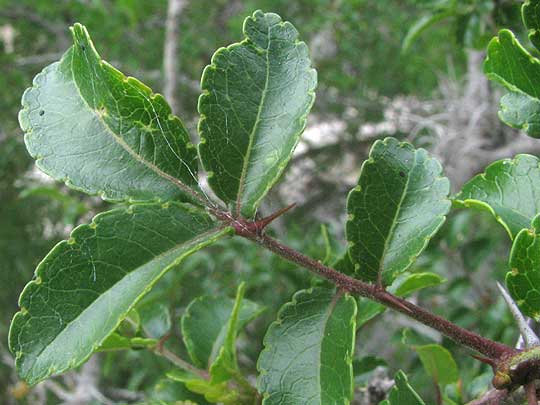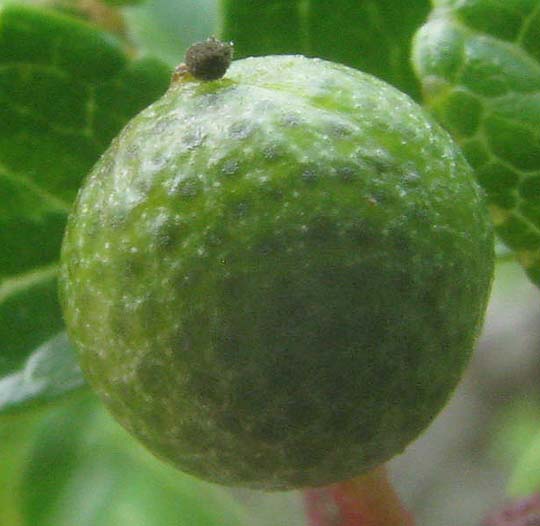Excerpts from Jim Conrad's
Naturalist Newsletter

from the the June 2, 2013 Newsletter issued from the Frio Canyon Nature Education Center in northern Uvalde County, southwestern Texas, on the southern border of the Edwards Plateau; elevation ~1750m (~5750 ft); N29.62°, W99.86°; USA
TICKLETONGUE
Behind the cabin at the very edge of a limestone cliff with a 20-ft drop-off to the little Dry Frio River below there's the smallish, scraggly, spiny tree shown below:

The tree's compound leaves, spines and green fruits are shown at the page top. A close-up showing just one leaf with five leaflets, and spines growing from the rachis where the upper two leaflets meet, appears below:

The spherical, green fruits have something special about them, which you can see below:

What's special about the fruit is that the fruit's surface is bumpy or grainy like an orange's.
There's good reason why this tree's fruits might resemble green oranges, and that's because both this tree and orange trees are members of the Citrus Family, the Rutaceae. The bumps on the green fruit's skin are glands filled with aromatic oils, just as in the case of the orange fruit.
Despite this interesting little tree species growing naturally only in arid northeastern Mexico, Texas, and a tiny part of Oklahoma, it's captured the imagination of so many people that it goes by several names, including Texas Prickly-ash, Tickletongue, Tingletongue, Toothachetree and Texas Hercules Club. It's ZANTHOXYLUM HIRSUTUM, and people pay attention to it because its bark, leaves, and fruit all cause an interesting sensation in the mouth if you chew on them. First you enjoy a zesty, lemony flavor, then your tongue and lips begin to tingle, and finally your mouth goes numb. The effect is extreme with the green fruits on the tree now, but only mild with the leaves.
If you're familiar with the effects of Szechuan peppers used in Chinese cuisine, those "peppers" also are fruits of a tree that belongs to the same genus as Tickletongue, Zanthoxylum. In fact, worldwide there are maybe 250 Zanthoxylum species, with several in North America. All the ones I know look more or less like this one, though some have leaves with more numerous leaflets, grow larger, or are more or less spiny than this one.
I read that when mature the fruits turn reddish brown. I've been waiting to see fruits of that color but my impression is that birds eat the fruits before they ripen completely.